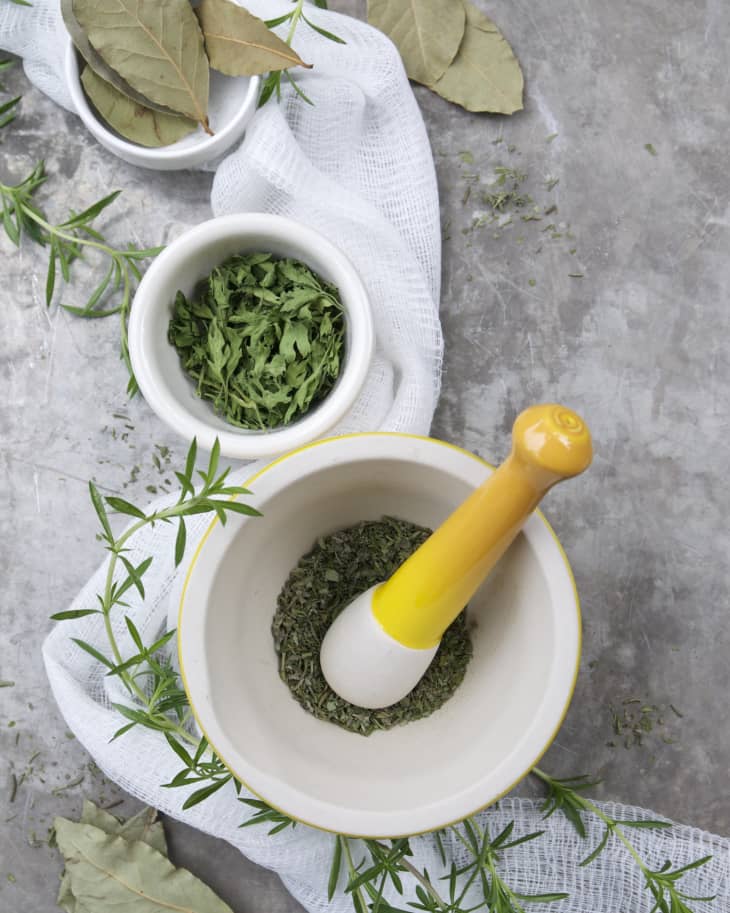4 Interesting Ways to Preserve Fresh Thyme
Thyme is a culinary herb that tastes just as great dried as it does plucked straight from the garden. It’s also an herb that is incorporated more during the actual cooking process and less as a finishing note or garnish, making thyme a prime candidate for preserving.
Over the summer, thyme should always be in constant rotation in your dehydrator or oven. You’ll thank me this winter, when you’re adding it to lentil soup, savory beef stew, or lemon-garlic roasted chicken.
1. Freeze Your Freshly Cut Thyme.
The hardy, evergreen nature of culinary thyme is perfect for the method of freezing. Although many delicate herbs may lose their prized texture upon thawing, sturdy thyme remains firm. Thyme is also used early on during the cooking process, so once again, texture isn’t an issue.
Take fresh thyme leaves (no need to chop) and place them in ice cube trays. Cover them with water and freeze. Once frozen, transfer the cubes to freezer bags and use as soup starters or “flavor bombs” in winter stews and roasts. If you’re looking to use whole thyme leaves, just freeze entire stems of thyme in freezer bags. Once frozen, the whole leaves will easily come off the stem.
2. Dry or Dehydrate Your Thyme.
Thyme is one of those wonderful herbs that retains many of its inherent, positive qualities once dried. Personally, I like the ease and consistency of using a dehydrator, but air-drying and oven-drying are other viable drying methods.
If you are drying or dehydrating other herbs from your garden, consider making a classic Italian seasoning or herbes de Provence blend. Every year, I blend all of the herbs I’ve dehydrated from my garden for a “yard blend.” The flavor profile changes each year, depending on what grew the best, but thyme is always a strong component.
3. Make a Bouquet Garni for Now or Later.
Tossing a bouquet garni into your soups, stews, or sauces amplifies the aromatics and creates dimension without the addition of particulates. It’s particularly nice for things like chunks of herbs, peppercorns, or bay leaves, which you normally wouldn’t want to end up on your soup spoon.
If you have fresh herbs on hand, gather the usual suspects, like thyme, bay leaves, and parsley. Get creative and add rosemary, winter savory, or pink peppercorns. Wrap them in cheesecloth and secure with butcher’s twine. A tea infuser also does the trick.
If you have a lot of dried herbs to deal with, make multiple bouquets and store them in a tightly sealed jar for your next foray into soup- or stew-making. These make excellent gifts, too. I love securing them, along with a gift tag, to my holiday packages.
4. Make Thyme Oil, Vinegar, Butter, or Honey.
I went into further detail describing these techniques in our recent post on preserving sage. These techniques translate identically since thyme, like sage, is a hardier culinary herb.
What is your favorite or most unique way to preserve thyme from your garden or from the farmers market? Any favorite summer recipes for your fresh thyme?
